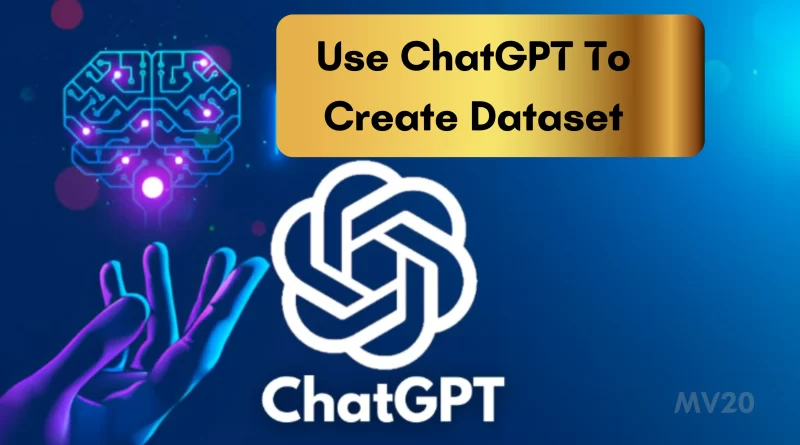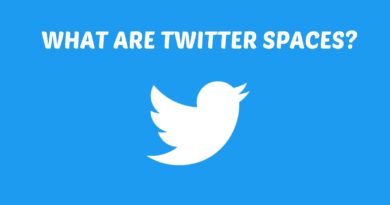How To Use ChatGPT To Create Dataset? [Use cases in Different Fields]
Are you looking to create a dataset with ChatGPT? Well, you’ve come to the right place! Let me guide you through the process of using ChatGPT to create a dataset that will blow your mind.
So before we begin lemme give you a brief on what a dataset is. A dataset is a collection of data that is organized and structured in a particular way.
It’s like a big bucket of information that you can use to train machine learning models, build chatbots, or perform any other data-related task.
Well with that, let’s get into the nitty-gritty of creating a dataset with ChatGPT. Here are the steps you need to follow when creating a datatset.
Use ChatGPT To Create Dataset
Step 1: Choose a Topic
The first step is to choose a topic for your dataset. This could be anything from “Famous Dogs” to “Types of Pasta” to “Quotes from ‘The Office.'” Just make sure that the topic is something that ChatGPT can generate text about.
Step 2: Generate Text with ChatGPT
Once you have your topic, it’s time to generate some text using ChatGPT. To do this, simply type in a prompt related to your topic and let ChatGPT do the rest.
For example, if your topic is “Famous Dogs,” you could type in “Tell me about Lassie” and see what ChatGPT comes up with.
Step 3: Clean and Organize the Data
Now that you have some text generated by ChatGPT, it’s time to clean and organize it. This means removing any irrelevant or duplicate information and organizing the remaining information in a structured way.
Step 4: Repeat Steps 2 and 3
To create a robust dataset, you’ll want to repeat steps 2 and 3 several times. This will give you a diverse set of data that you can use for a variety of tasks.
Step 5: Add Labels (Optional)
If you want to use your dataset for machine learning or other data-related tasks, you may want to add labels to your data. Labels are essentially categories that you can use to organize and classify your data.
For example, if your dataset is about different types of pasta, you could add labels like “spaghetti,” “lasagna,” and “ravioli.”
Step 6: Share Your Dataset (Optional)
Now, if you’re feeling generous, you can share your dataset with the world! This is a great way to contribute to the open-source community and help others who may be working on similar projects.
With these six simple steps, you can create a dataset using ChatGPT that will be the envy of all your data-loving friends.
But wait, there’s more! Here are some tips and tricks to help you get the most out of ChatGPT:
Tip #1: Experiment with Different Prompts
ChatGPT is an incredibly versatile tool, so don’t be afraid to experiment with different prompts to see what kind of text it generates. You never know what gems you might uncover!
Tip #2: Use the GPT-3 API
If you need more advanced functionality or access to larger models, you can use the GPT-3 API. This is a paid service, but it gives you access to some of the most powerful text-generation models available.
Tip #3: Collaborate with Others
Creating a dataset can be a lot of work, so why not collaborate with others? You could team up with other data enthusiasts to create a comprehensive dataset that covers a wide range of topics.
With these tips and tricks, you’re well on your way to becoming a data wizard. Now go forth and create some amazing datasets with ChatGPT. Need some inspiration? Well, I got you.
Here are a few examples of datasets that you could create using ChatGPT:
Example 1: “Famous Quotes”
Prompt: “Tell me a famous quote from [insert famous person’s name here].”
It generates quotes from famous people could lead to a diverse dataset that spans across many different industries, from sports to politics to entertainment.
Example 2: “Historical Events”
Prompt: “Tell me about [insert historical event here].”
ChatGPT can generate information about historical events could lead to a comprehensive dataset that covers many different time periods and cultures.
Example 3: “Product Reviews”
Prompt: “What do people think about [insert product name here]?”
If product reviews are generated using ChatGPT, it might result in a large dataset that includes information on many types of products and services.
The dataset generated by ChatGPT can be useful for a variety of purposes, such as market research, product development, and customer feedback analysis. By analyzing the dataset, businesses can gain valuable insights into the strengths and weaknesses of their products, as well as the needs and preferences of their customers.
Example 4: “Recipes”
Prompt: “What’s a recipe for [insert dish or cuisine here]?”
Using ChatGPT to generate recipes could lead to an ample dataset that covers a wide range of cuisines and dishes. You could even add additional prompts to ask for more specific types of recipes, such as vegan or gluten-free options.
Example 5: “Famous Landmarks”
Prompt: “Tell me about [insert famous landmark here].”
ChatGPT the great can be used to compile data on well-known locations from throughout the world might provide a rich resource with insights into many different cultures. You could include prompts for specific types of landmarks, such as museums or natural wonders.
Example 6: “Fitness Tips”
Prompt: “What are some tips for [insert fitness goal here], such as weight loss or muscle gain?”
Generating fitness tips could lead to a dataset that provides useful information for people looking to improve their health and fitness. You could even add prompts for specific types of exercises, such as yoga or weightlifting.
Use ChatGPT to Create Dataset for Coders
ChatGPT can be a great tool for generating code snippets, documentation, and other code-related data. Here are a few examples of datasets that you could create using ChatGPT:
Example 1: “Code Snippets”
Prompt: “Show me a code snippet that [insert task here].”
Yes, using ChatGPT to generate code snippets could potentially lead to a comprehensive dataset that covers a wide range of programming languages and tasks.
As a language model, ChatGPT has been trained on vast amounts of text data, including code snippets and programming languages. This means that it has the ability to generate code that adheres to the syntax and conventions of various programming languages.
By using ChatGPT to generate code snippets for different programming languages and tasks, it’s possible to create a diverse dataset that can be used for various purposes, such as training machine learning models, testing code quality and consistency, or even providing code examples for educational purposes.
Example 2: “Documentation”
Prompt: “What is [insert programming concept here], and how is it used?”
UtilizingCh atGPT to generate documentation on programming concepts could lead to an extensive dataset that covers many different programming languages and topics.
Example 3: “Error Messages”
Prompt: “What does [insert error message here] mean?”
One way to create such a dataset would be to use ChatGPT to generate natural language explanations for various error messages that programmers commonly encounter during software development.
By doing so, developers could more easily understand the cause of the error and how to fix it, leading to faster and more effective troubleshooting.
Furthermore, this dataset could be used to train machine learning models to automatically detect and diagnose common programming errors, which could be particularly useful for novice programmers who may not yet have the experience to quickly identify and correct issues on their own. So why not give it a try?
Final Thoughts!
By creating these datasets, you could help people learn and explore new topics.
So it’s time to fire up ChatGPT, and start creating your very own dataset! Let me know in the comments what kind of datasets did you create with ChatGPT.




